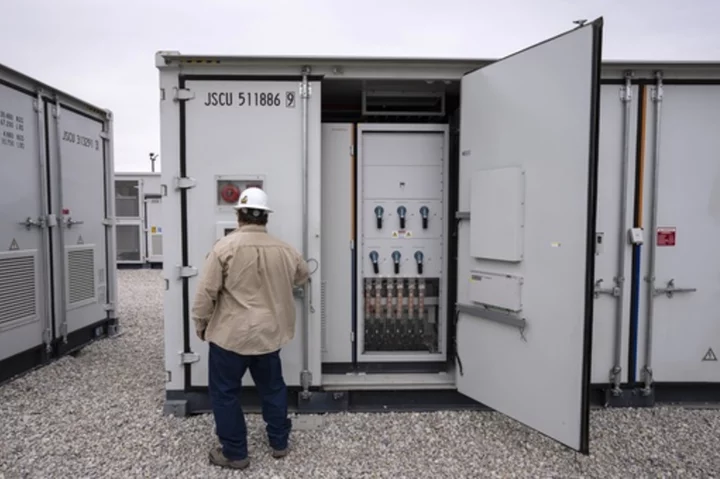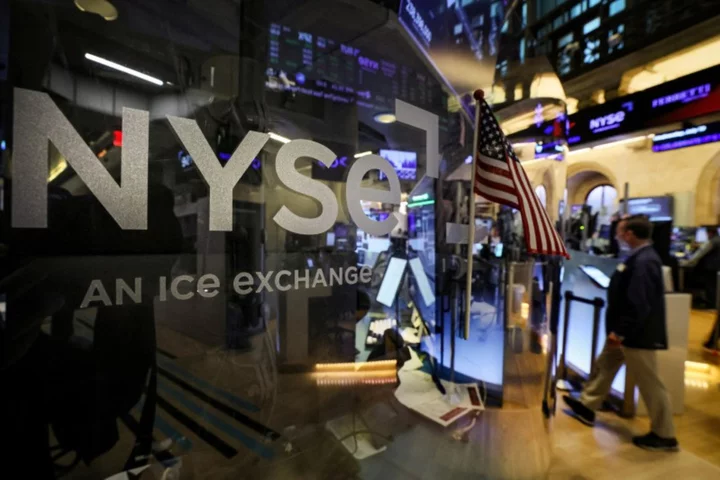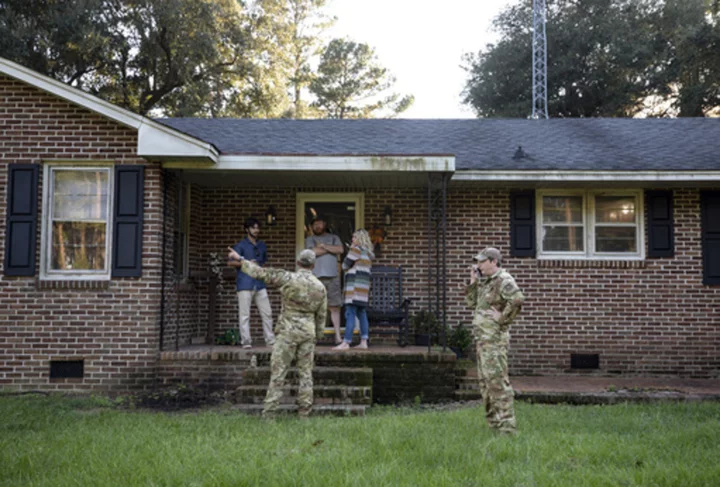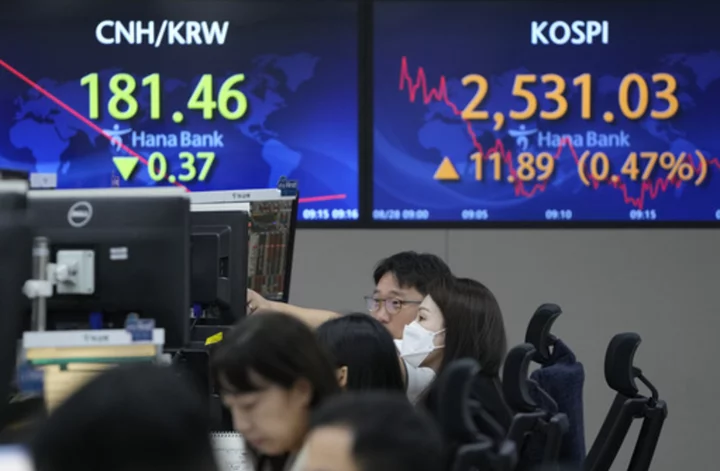The Energy Department is announcing a $325 million investment in new battery types that can help turn solar and wind energy into 24-hour power it said Friday morning.
The funds will be distributed among 15 projects in 17 states and the Red Lake Nation, a Native American tribe based in Minnesota.
Batteries are increasingly being used to store surplus renewable energy so that it can be used later, during times when there is no sunlight or wind. The department says the projects will protect more communities from blackouts and make energy more reliable and affordable.
“Everywhere in the U.S. has issues with intermittent renewable energy ... every day the sun sets and you have to be able to take the energy that you produced during the day and use that at nighttime,” said Christopher Rahn, professor of mechanical engineering at Pennsylvania State University.
The new funding is for “long-term” storage, meaning options that can last for longer than the four hours typical of lithium ion batteries.
Storage that can keep putting out energy from sundown to sun up, or for several overcast days at a time, is the fervent work of thousands of engineers around the world right now because it's a serious way to address climate change, by allowing natural gas or coal-fired power plants to turn off.
“Long-duration battery storage is like a rainy-day savings account for energy storage,” said Jodie Lutkenhaus, professor of chemical engineering at Texas A&M University.
“As long as these batteries use Earth-abundant materials that are readily available, I do not see any drawbacks,” Lutkenhaus said, alluding to minerals that need to be mined, including lithium.
“Regions where solar power and wind power are growing rapidly are often the most interested in long-duration storage. In the U.S., we see a lot of interest in this technology coming from places like California, New York and Hawaii,” said Amanda Smith, a senior scientist at Project Drawdown, a group that publicizes actions that can be taken to address the climate disruption that has already touched large swaths of the planet.
The projects feature a range of batteries that provide up to 100 hours of power.
Here is some of what is being funded, through the Bipartisan Infrastructure Law of 2021:
A project led by Xcel Energy in partnership with long-term battery manufacturer Form Energy will deploy two 100-megawatt battery systems at the site of coal plants that are closing in Becker, Minnesota and Pueblo, Colorado. There are new incentives for businesses that put in clean power installations at existing energy sites.
A project at California's Valley Children's Hospital in Madera, an underserved community, will install a battery system to add reliability for the acute care medical center facing potential power outages from wildfires, floods and heat waves. This one is led by the California Energy Commission in collaboration with Faraday Microgrids.
The Second Life Smart Systems initiative with sites in Georgia, California, South Carolina and Louisiana will use old, but still potent electric vehicle batteries for back-up power for senior centers, affordable housing complexes, and EV chargers.
Another project led by Rejoule, a battery diagnostics company, similarly will use retired EV batteries at three locations, Petaluma, California; Santa Fe, New Mexico and a worker training center at the Red Lake Nation, not far from the border with Canada.
Energy Undersecretary for Infrastructure David Crane said the announced projects will prove the technologies work at scale, help utilities plan for longer-term storage and start bringing down costs.
“A cheap battery would remove the biggest hurdle to a renewables transition,” said Elisabeth Moyer, associate professor of atmospheric science at the University of Chicago, noting that the materials availability is also still an issue and the technology does ultimately generate waste.
“If we can bring down the cost, then you’re going to start to see many more battery installations across the grid,” Rahn said.
___
Associated Press climate and environmental coverage receives support from several private foundations. See more about AP’s climate initiative here. The AP is solely responsible for all content.









